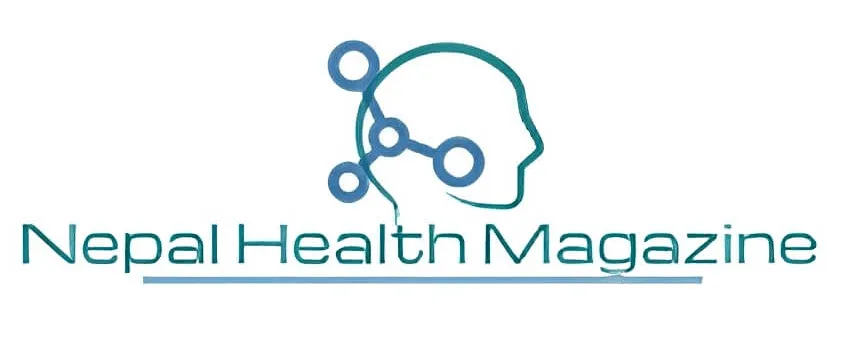What is Clinical maltreatment | WHO Response : Child maltreatment is the abuse and neglect that occurs to children under 18 years of age. It includes all types of physical and/or emotional ill-treatment, sexual abuse, neglect, negligence and commercial or other exploitation, which results in actual or potential harm to the child’s health, survival, development or dignity in the context of a relationship of responsibility, trust or power.
Table of Contents
Key facts
- Nearly 3 in 4 children – or 300 million children – aged 2–4 years regularly suffer physical punishment and/or psychological violence at the hands of parents and caregivers
- One in 5 women and 1 in 13 men report having been sexually abused as a child aged 0-17 years.
- 120 million girls and young women under 20 years of age have suffered some form of forced sexual contact.
- Consequences of child maltreatment include impaired lifelong physical and mental health, and the social and occupational outcomes can ultimately slow a country’s economic and social development.
- Child maltreatment is often hidden. Only a fraction of child victims of maltreatment ever gets support from health professionals.
- A child who is abused is more likely to abuse others as an adult so that violence is passed down from one generation to the next. It is therefore critical to break this cycle of violence, and in so doing create positive multi-generational impacts.
- Preventing child maltreatment before it starts is possible and requires a multisectoral approach.
- Effective prevention approaches include supporting parents and teaching positive parenting skills, and enhancing laws to prohibit violent punishment.
- Ongoing care of children and families can reduce the risk of maltreatment reoccurring and can minimize its consequences.
Scope of the problem
Child maltreatment is a global problem with serious life-long consequences. In spite of recent national surveys in several low- and middle-income countries, data from many countries are still lacking.
Child maltreatment is complex and difficult to study. Current estimates vary widely depending on the country and the method of research used. Estimates depend on:
- the definitions of child maltreatment used;
- the type of child maltreatment studied;
- the coverage and quality of official statistics;
- the coverage and quality of surveys that request self-reports from victims, parents or caregivers.
Nonetheless, international studies reveal that nearly 3 in 4 children aged 2-4 years regularly suffer physical punishment and/or psychological violence at the hands of parents and caregivers, and 1 in 5 women and 1 in 13 men report having been sexually abused as a child.
Every year, there are an estimated 40 150 homicide deaths in children under 18 years of age, some of which are likely due to child maltreatment. This number almost certainly underestimates the true extent of the problem, since a significant proportion of deaths due to child maltreatment are incorrectly attributed to falls, burns, drowning and other causes.
In armed conflict and refugee settings, girls are particularly vulnerable to sexual violence, exploitation and abuse by combatants, security forces, members of their communities, aid workers and others.
Consequences of maltreatment
Child maltreatment has often severe short- and long-term physical, sexual and mental health consequences. These include injuries, including head injuries and severe disability, in particular in young children; post-traumatic stress, anxiety, depression, and sexually transmitted infections (STIs) including HIV. Adolescent girls may face additional health issues, including gynaecological disorders and unwanted pregnancy. Child maltreatment can affect cognitive and academic performance and is strongly associated with alcohol and drug abuse and smoking – key risk factors for noncommunicable diseases (NCDs) such as cardiovascular diseases and cancer.
Maltreatment causes stress that is associated with disruption in early brain development. Extreme stress can impair the development of the nervous and immune systems. Consequently, as adults, maltreated children are at increased risk for behavioural, physical and mental health problems such as:
- perpetrating or being a victim of violence
- depression
- smoking
- obesity
- high-risk sexual behaviours
- unintended pregnancy
- alcohol and drug misuse.
Violence against children is also a contributor to inequalities in education. Children who experienced any form of violence in childhood have a 13% greater likelihood of not graduating from school.
Beyond the health, social and educational consequences of child maltreatment, there is an economic impact, including costs of hospitalization, mental health treatment, child welfare, and longer-term health costs.
Risk factors
Several risk factors for child maltreatment have been identified. Not all risk factors are present in all social and cultural contexts, and the list here provides an overview when attempting to understand the causes of child maltreatment.
Child
It is important to emphasize that children are the victims and are never to blame for maltreatment. Characteristics of an individual child that may increase the likelihood of being maltreated include:
- being either under four years old or an adolescent
- being unwanted, or failing to fulfil the expectations of parents
- having special needs, crying persistently or having abnormal physical features
- having an intellectual disability or neurological disorder
- identifying as or being identified as lesbian, gay, bisexual or transgender.
Parent or caregiver
Characteristics of a parent or caregiver that may increase the risk of child maltreatment include:
- difficulty bonding with a newborn
- not nurturing the child
- having been maltreated themselves as a child
- lacking awareness of child development or having unrealistic expectations
- misusing alcohol or drugs, including during pregnancy
- having low self-esteem
- suffering from poor impulse control
- having a mental or neurological disorder
- being involved in criminal activity
- experiencing financial difficulties.
Relationship
Characteristics of the relationships within families or among intimate partners, friends and peers that may increase the risk of child maltreatment include:
- family breakdown or violence between other family members
- being isolated in the community or lacking a support network
- a breakdown of support in child rearing from the extended family.
Community and societal factors
Characteristics of communities and societies that may increase the risk of child maltreatment include:
- gender and social inequality;
- lack of adequate housing or services to support families and institutions;
- high levels of unemployment or poverty;
- the easy availability of alcohol and drugs;
- inadequate policies and programmes to prevent child maltreatment, child pornography, child prostitution and child labour;
- social and cultural norms that promote or glorify violence towards others, support the use of corporal punishment, demand rigid gender roles, or diminish the status of the child in parent–child relationships;
- social, economic, health and education policies that lead to poor living standards, or to socioeconomic inequality or instability.
Prevention
Preventing and responding to child maltreatment requires a multisectoral approach.
The earlier such interventions occur in children’s lives, the greater the benefits to the child (e.g. cognitive development, behavioural and social competence, educational attainment) and to society (e.g. reduced delinquency and crime).
Effective and promising interventions include:
- Parent and caregiver support: Information and skill-building sessions to support the development of nurturing, non-violent parenting delivered by nurses, social workers, or trained lay workers through a series of home visits or in a community setting.
- Education and life skills approaches:
- Increasing enrolment in quality education to allow children acquire knowledge, skills and experiences that build resilience and reduce risk factors for violence
- Programmes to prevent sexual abuse that build awareness and teach skills to help children and adolescents understand consent, avoid and prevent sexual abuse and exploitation, and to seek help and support
- Interventions to build a positive school climate and violence-free environment, and strengthening relationships between students, teachers, and administrators
- Norms and values approaches: Programmes to transform restrictive and harmful gender and social norms around child-rearing, child discipline and gender equality and promote the nurturing role of fathers
- Implementation and enforcement of laws: laws to prohibit violent punishment and to protect children from sexual abuse and exploitation.
- Response and support services: Early case recognition coupled with ongoing care of child victims and families to help reduce reoccurrence of maltreatment and lessen its consequences.
To maximize the effects of prevention and care, WHO recommends that interventions are delivered as part of a four-step public health approach:
- defining the problem;
- identifying causes and risk factors;
- designing and testing interventions aimed at minimizing the risk factors;
- disseminating information about the effectiveness of interventions and increasing the scale of proven effective interventions.

Hey there, I am Nirdesh Baral, founder of Nepal Health Magazine. I am a Tech geek by passion , Public health practitioner by profession and an Ailurophile by heart and a patriot by birth



